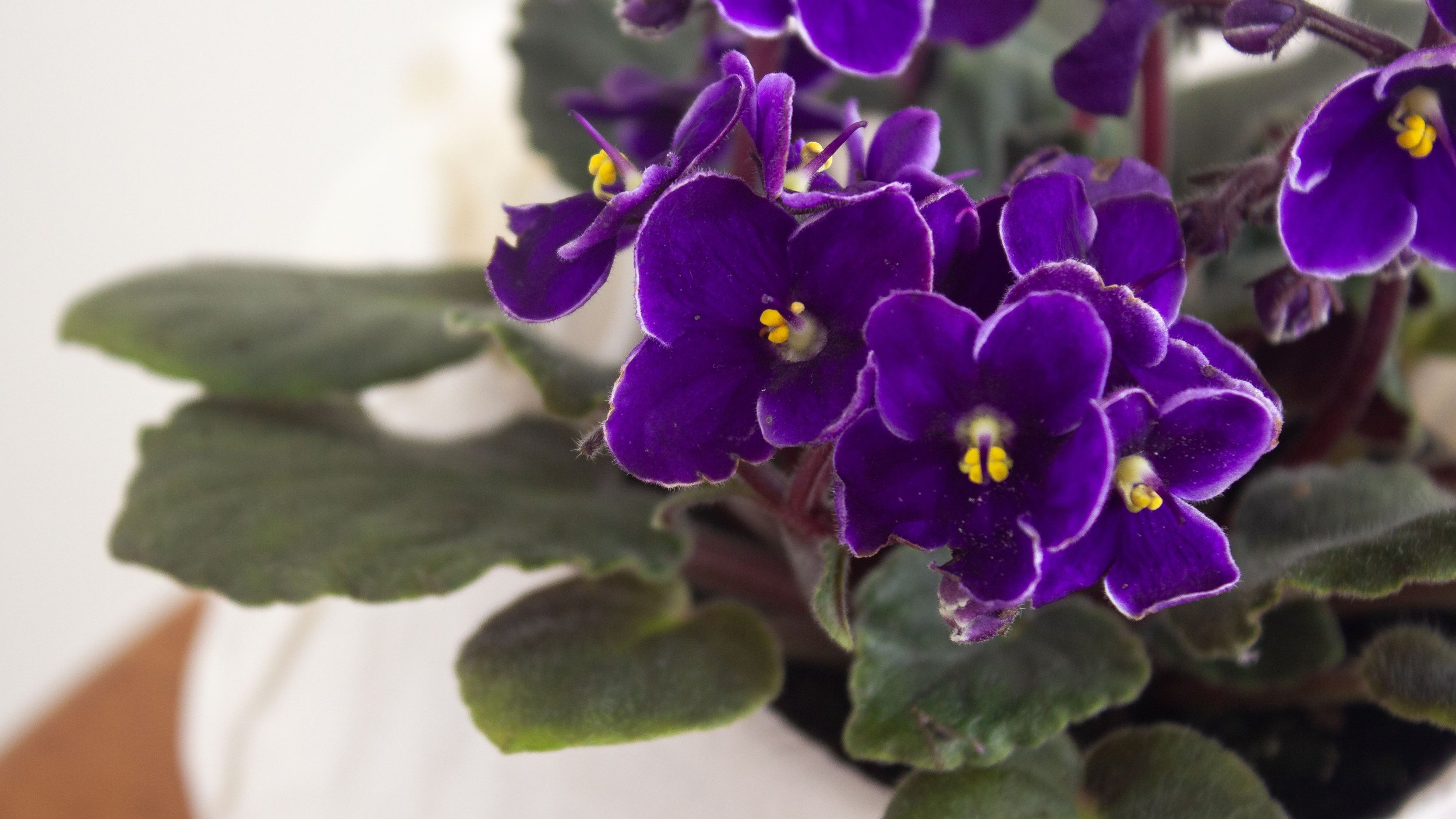
AFRICAN VIOLETS
African Violets are a small group of semi-succulent species in the genus Streptocarpus. While they are a commonly cultivated indoor houseplant, grown for their fuzzy leaves and delicate blooms, they are actually endemic to a small mountainous area in Southern Kenya and Northern Tanzania. They grow low to the ground, lightly shaded by the canopy above them, in rocky, well-draining substrate. African Violets are commonly hybridized to create flowers with beautiful shades of pink, purple, and white, sporting leaves of solid deep green, light lime green, or even with creamy streaks of variegation.
LIGHT
African Violets need bright indirect light, though they can tolerate a couple hours of direct sun. East facing windows are typically a good spot for these plants.
WATERING & SOIL
These plants need a well draining potting medium that allows the roots to dry between waterings. While African violets typically need water about 1-2 times a week, they cannot tolerate being in soggy soil, so a well-draining mix is crucial. They are quite sensitive to having water on their leaves, which can sometimes lead to damage. This makes African Violets a good candidate for bottom-watering. To do this, fill up a bowl or liner with water, and allow the soil to soak up the water through the drainage holes in the bottom of the pot. After a few minutes, test the top of the soil with your finger–when the plant is well watered, the topsoil will feel lightly moist. You can also use self-watering pots to achieve the same results.
TEMPERATURE
These plants prefer not to drop below 65℉, and will flower most readily when kept warm.
FERTILIZER
One of the best aspects of growing African Violets are the blooms! They are one of the few commonly kept indoor plants that are able to bloom continuously for months at a time. In order to do so, African Violets need to be fed regularly. Due to their popularity, it is easy to find specially formulated fertilizer just for African Violets. However, most “bloom” fertilizers will also do the trick. You can typically feed African Violets every time you water in the warmer seasons, then as needed the rest of the year. If the plant is putting out growth or flowering, you can feed it.
PROPAGATION
African Violets are extremely easy to propagate, creating more plants for you to enjoy or share with a friend. One of the simplest methods is through leaf cuttings. Using clean, sharp scissors, clip a healthy leaf from the plant, making sure to cut it close to the stem of the mother plant. Then, trim the stem of the leaf down so it is 1-2 cm long. You can then place the stem into water, or pop it into some lightly watered, well-draining soil. In a few weeks, you should see some baby leaves emerging. If water propagating, plant the cutting into soil when you see leaves beginning to form.


